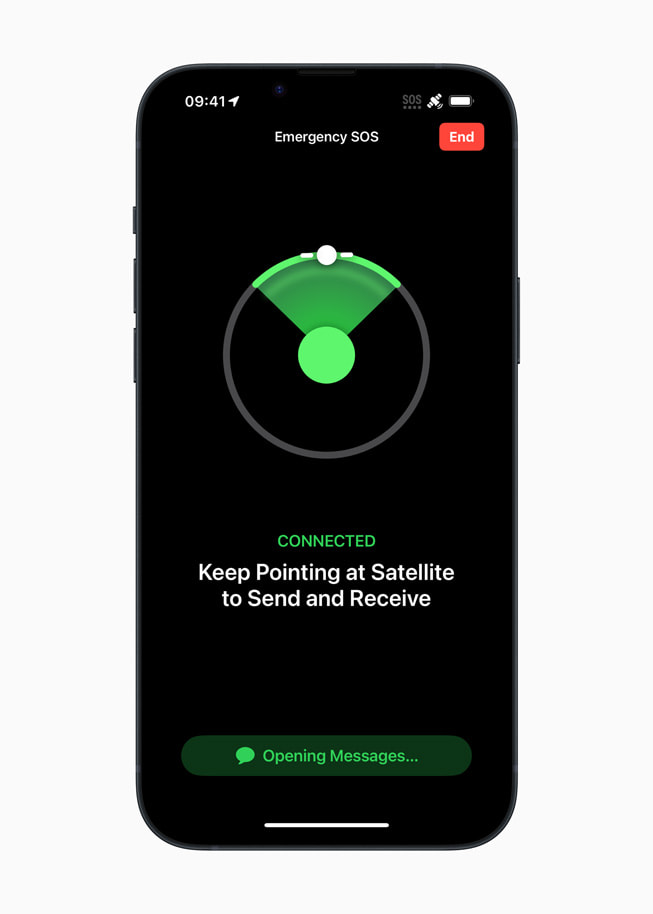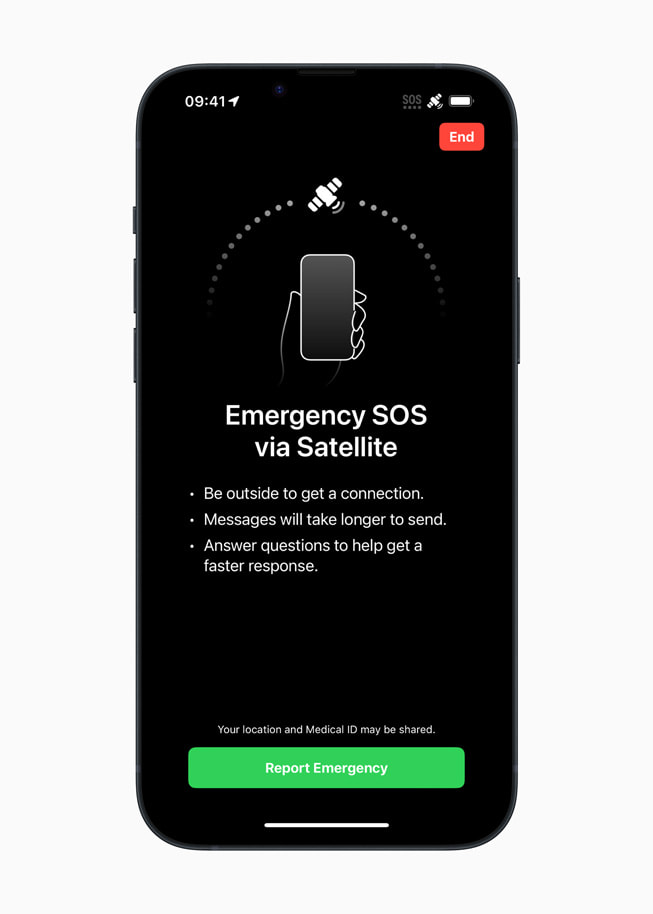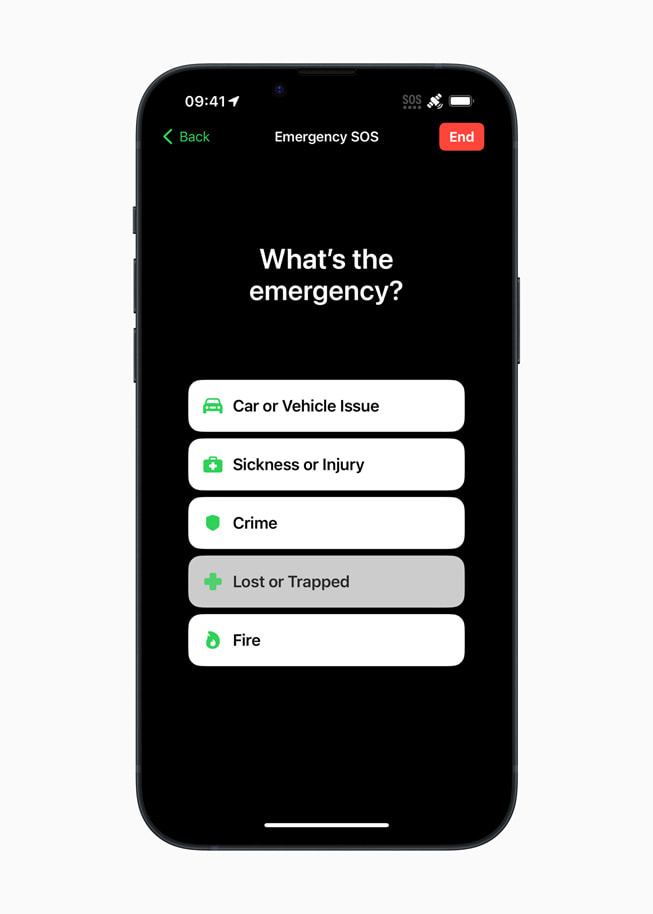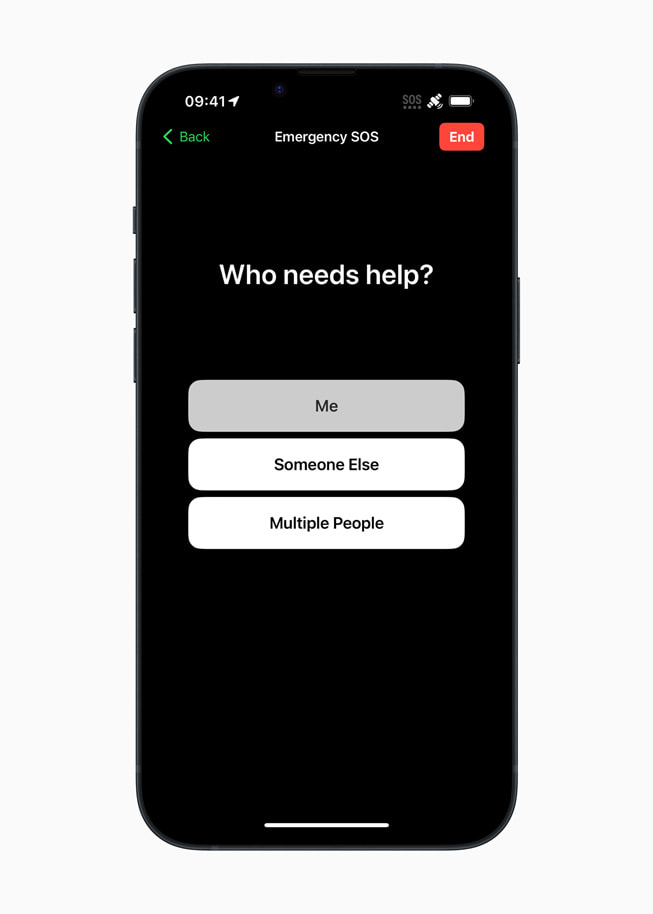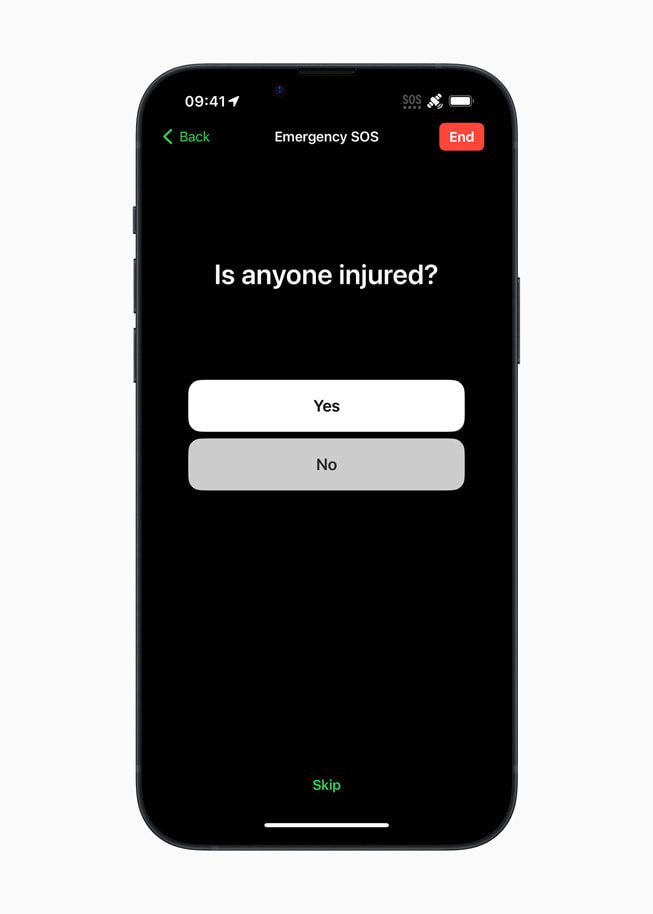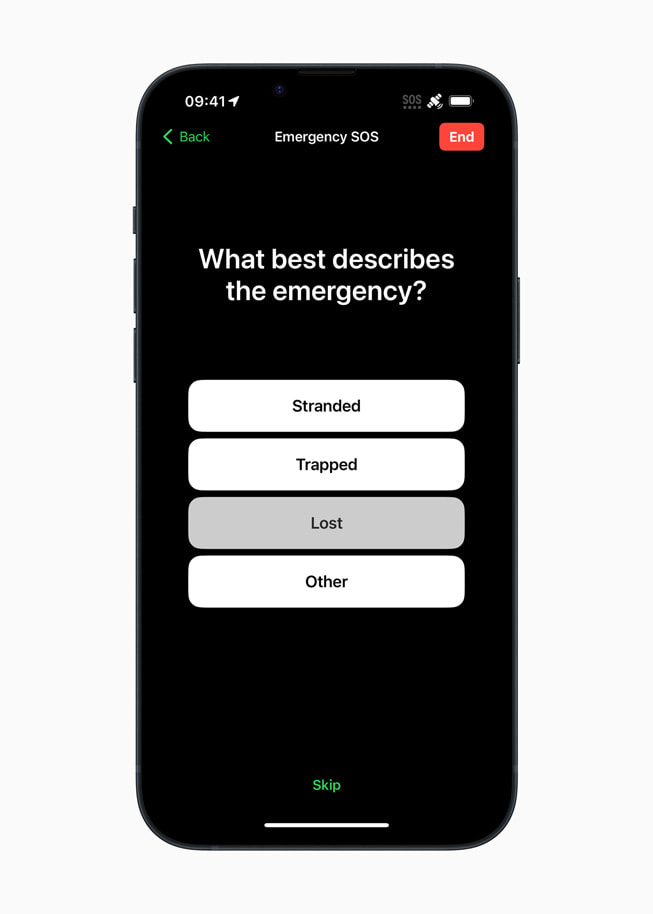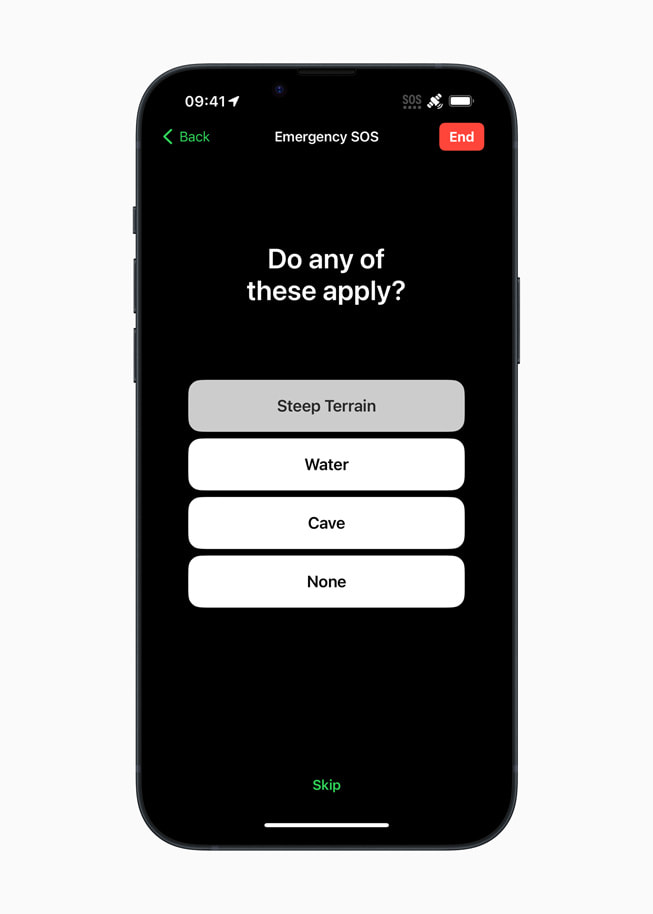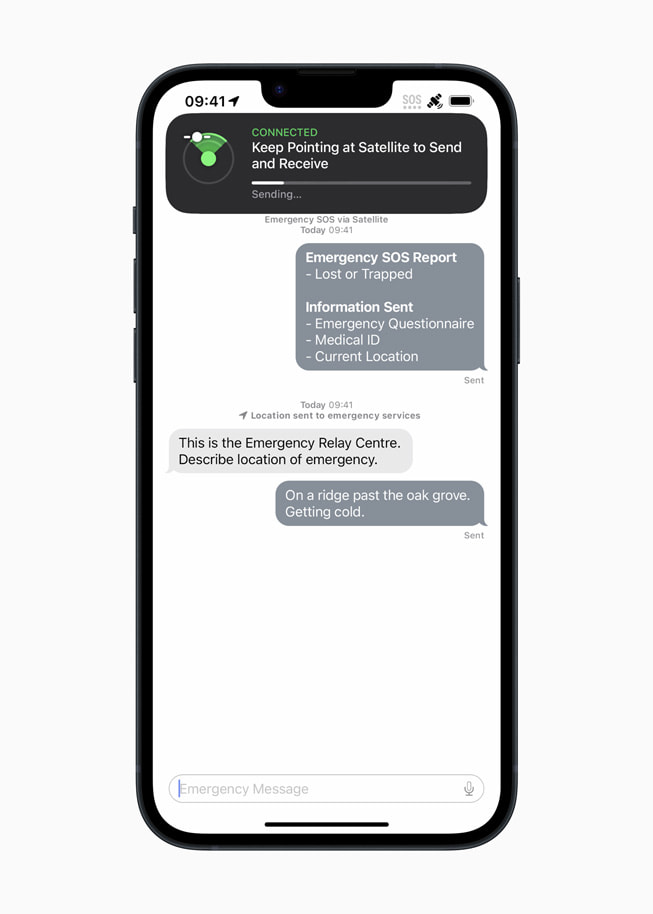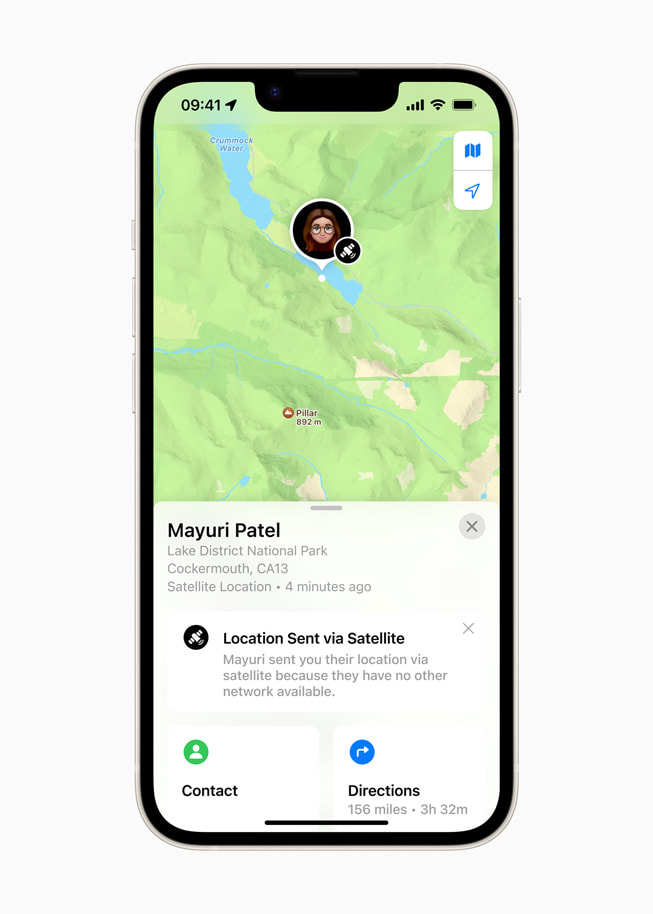UPDATE
13 December 2022
Emergency SOS via satellite available today on the iPhone 14 lineup in France, Germany, Ireland, and the UK
iPhone 14 users can now connect with emergency services when cellular and Wi-Fi coverage are not available
Apple’s groundbreaking safety service Emergency SOS via satellite is available starting today for customers in France, Germany, Ireland, and the UK. Available on all iPhone 14 models, the innovative technology enables users to message with emergency services while outside of cellular and Wi-Fi coverage. Additionally, if users want to reassure friends and family of their whereabouts while traveling in an area with no cellular or Wi-Fi coverage, they can now open the Find My app and share their location via satellite.
Every model in the iPhone 14 lineup — iPhone 14, iPhone 14 Plus, iPhone 14 Pro, and iPhone 14 Pro Max — can connect directly to a satellite through a combination of custom-designed components and deeply integrated software. Emergency SOS via satellite builds on existing features vital to iPhone users, including Emergency SOS, Medical ID, emergency contacts, and Find My location sharing, offering the ability to connect to a satellite to share critical information with emergency services, family, and friends. This game-changing service connects users to relay centres staffed with Apple-trained emergency specialists who are ready to contact Public Safety Answering Points (PSAPs) — or emergency services call centres — on the user’s behalf to get them the help they need.
“Emergency SOS via satellite makes emergency communications over satellite more accessible, which is very exciting,” said Gary Machado, the European Emergency Number Association’s CEO. “In practice, it means that many more people will be able to contact 112 when they have no mobile coverage and need urgent assistance. We are confident that this will save many lives and offer significant help to emergency services dealing with these often very complicated rescues.”
“Being able to use a satellite connection to contact 999 or 112 if there is no cellular or Wi-Fi coverage is a breakthrough that Apple has brought to the general public with iPhone 14,” said John Anthony, the British Association of Public Safety Communications Officials’ president. “The feature will mean that emergency services can be alerted when it was not previously possible and are then able to do their jobs to better effect, in part because of the initial information that can be shared with dispatchers, such as location and essential details about the emergency. Ultimately, this will help save lives.”
How Emergency SOS via Satellite Works
iPhone can already quickly and easily call emergency services if a user is in need of help, even if they are unable to dial 112, with a long press on the power and volume buttons, or by rapidly pressing the power button five times. With Emergency SOS via satellite — introduced with the iPhone 14 lineup — if a user is not able to reach emergency services because no cellular or Wi-Fi coverage is available, an easy-to-use interface appears on iPhone to get the user help utilizing a satellite connection. A short questionnaire appears to help the user answer vital questions with a few simple taps, which is transmitted to dispatchers in the initial message, to ensure they are able to quickly understand a user’s situation and location. Apple worked closely with experts to review standard questions and protocols to identify the most common reasons for calling emergency services.
Following the questionnaire, the intuitive interface guides the user where to point their iPhone to connect and sends the initial message. This message includes the user’s questionnaire responses; location, including altitude; iPhone battery level; and Medical ID, if enabled. The questionnaire and follow-up messages are relayed directly via satellite to relay centres staffed by Apple‑trained specialists who can call for help on the user’s behalf. The transcript can also be shared with the user’s emergency contacts to keep them informed.1
“Emergency SOS via satellite will improve the situation for people who are in trouble and outside of cellular and Wi-Fi coverage, allowing them to reach emergency services and get help in emergency situations,” said Jan Tino Demel, the Expert Group for Control Center Technology and Emergency Calls Committee’s chairman. “The function can be used immediately without any adjustments to existing systems. With highly qualified, multilingual emergency specialists, Apple facilitates the transfer of emergency calls to the responsible rescue or police control centre. Without a doubt, this can save lives.”
“Emergency SOS via satellite is a major innovation that will save lives by helping iPhone 14 users in remote areas who might not otherwise be able to reach emergency services,” said Michael Kelly, BT Ireland’s head of the Emergency Call Answering Service. “Because Apple has implemented a model that emergency operators are familiar with, we can expect a seamless rollout for our operators and emergency service partners.”
Satellites move rapidly, have low bandwidth, and are located more than a thousand kilometres away from Earth, so it can take a few minutes for even short messages to get through. Apple designed and built custom components and software that allow iPhone 14 to connect to a satellite’s unique frequencies without a bulky antenna. A text compression algorithm was also developed to reduce the average size of messages by 3x, making the experience as fast as possible. With Emergency SOS via satellite, users can send and receive messages in as little as 15 seconds in clear conditions.2 Using the built-in Emergency SOS via satellite demo, users can test satellite connectivity on their iPhone by connecting to a real satellite in range without calling emergency services, allowing them to experience the process and familiarize themselves with the service.
For users who go out of cellular or Wi-Fi range but don’t experience an emergency, this advanced technology also enables them to share their location via satellite with Find My. In the Find My app, users can open the Me tab, swipe up to see My Location via Satellite, and tap Send My Location. The satellite connection on the iPhone 14 lineup also works with other safety features available on iPhone and Apple Watch, including Crash Detection and Fall Detection.
Availability
- Emergency SOS via satellite and Find My via satellite are available today in France, Germany, Ireland, and the UK. Support for more countries will follow next year. The service is free for two years starting at the time of activation of a new iPhone 14, iPhone 14 Plus, iPhone 14 Pro, and iPhone 14 Pro Max.3
- Emergency SOS via satellite and Find My via satellite require iOS 16.1 or later.
- With iOS 16.2, users who dial a local emergency service number will automatically be routed to 112, the European emergency phone number, if the call does not go through due to a cellular or Wi-Fi connection not being available, enabling them to utilise Emergency SOS via satellite even if they don’t dial 112.
Share article
Media
-
Text of this article
-
Images in this article
- Up to 10 emergency contacts using iOS 16.1 or later and iMessage will see the user’s location, type of emergency, and a live transcript of their conversation with emergency services. Emergency contacts who are not on iPhone, and iPhone users who aren’t using iOS 16.1 or later or iMessage, will see the user’s location and type of emergency. The user can opt to stop sharing their information with an emergency contact at any time. In order to reach the relay centre or dispatcher closest to the user, location information will also be shared with Apple.
- Connection and response times vary based on location, site conditions, and other factors. See support.apple.com/kb/HT213426 for more information.
- Users who purchased an iPhone 14 model before the availability date of Emergency SOS via satellite will receive two years of the service free starting from the service availability date.
